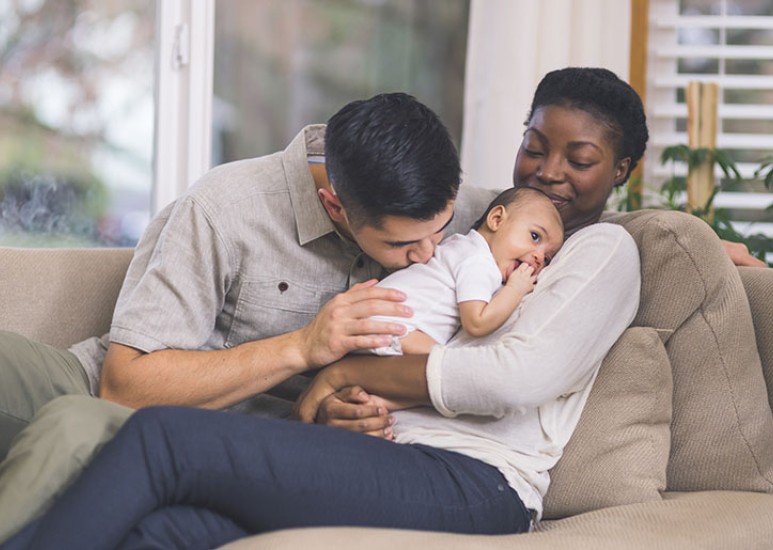If you have a newborn baby on the way, you probably have many questions! The number-one question our pediatricians get is simple: what can a parent do to keep their baby safe?
In this blog we'll tackle a few of the most common scenarios, including safe sleeping, car seat safety and hygiene. But first, we have a few quick tips for new parents from Dr. Kathleen Polonka, a pediatrician with Community Physician Network:
- Check your water temperature. Hot water can post a big risk to a baby. Check your water heater and turn the temperature down below 120 degrees to reduce the risk of burns.
- Keep water up and away. Babies and water don't mix unless they're 100% supervised. Make sure that your baby never has access to even a small amount of water when unsupervised. You might need to move a pet's water dish up off the floor, or get a safety lock for the toilet.
- Be prepared for mobility. At the six to nine-month mark, your baby is going to be a lot more mobile. That means everything on the ground is likely to end up in their mouth. Make sure you find a better home for any small objects that are laying around.
Sleep Safety Tips
A note on swaddling your infant: sleep sacks are a safe way to keep your baby warm for the first few months of their lives. But remember, around the eight-week mark it's time to ditch the swaddle as your baby may soon be rolling over.
At that point, it's best to switch to sleeveless garments like a wearable blanket or sleep sack. That way they'll have full range of motion with their arms, and won't get tangled up when they inevitably wiggle around throughout the night.
And when putting your baby down for sleep, remember your ABCs. Your baby should be:
- A: Alone. Babies should sleep alone, with no stuffed animals, blankets, pillows or bumper pads.
- B: On their Back. Not on their front, or in any other position.
- C: In their Crib (or bassinet). Don’t put your baby to sleep in an incline sleeper or car seat, since they might reposition themselves in a way that can impact their breathing.
Car Seat Safety
By this point you probably know that babies should only ride in car seats that face backward. But do you know the risks that come with letting your baby sleep in their car seat?
Since newborns don’t yet have the neck strength to support their heads, sleeping in a sitting position can pose a serious safety risk. Their heads may fall forward and restrict their airways, preventing them from breathing.
That’s not to say that a quick snooze in the back seat is putting your baby in any real danger. But once you reach your destination, the safest thing to do is lie them down flat in their crib or bassinet.
Cradle Cap and Baby Hygiene
It can be pretty alarming to see crusty yellow or scaly red skin pop up around your baby’s body! But luckily, in most cases it’s nothing more than cradle cap — a very common type of dermatitis that can show up anywhere from the top of your baby’s head to their diaper area.
The exact cause of cradle cap is unknown. It may be caused by glands in the skin producing too much oil, or from yeast normally found on the skin. You might also notice acne around those same areas. Aside from looking a bit scary, cradle cap is completely harmless. It doesn’t hurt, and it usually doesn’t even itch.
You can buy a gentle baby oil and brush it out before shampooing your baby’s scalp, but cradle cap will go away on its own before too long. Give them a bath every two or three days if they need it. Any more can contribute to dry skin.
For the answers to more frequently asked questions about newborns, visit our Newborn FAQ.
You can also visit our pediatrics page to learn more about keeping your newborn safe and in good health.
